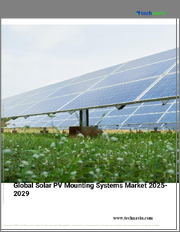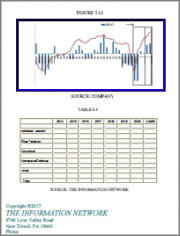
|
시장보고서
상품코드
1615955
세계의 온그리드 주택용 태양광 발전모듈 시장 : 기회, 성장 촉진요인, 산업 동향 분석 예측(2024-2032년)On Grid Residential Solar PV Module Market Opportunity, Growth Drivers, Industry Trend Analysis, and Forecast 2024 to 2032 |
||||||
온그리드 주택용 태양광 발전모듈 시장 규모는 2023년 581억 달러로 2024년부터 2032년까지 복합 연간 성장률(CAGR) 4.7%로 확대될 것으로 예측되고 있습니다.
일반적으로 태양배터리판이라 불리는 태양광 발전 모듈은 태양광을 전기로 변환하는 프레임워크 내에 결합된 복수의 광배터리로 구성되어 있습니다. 태양광을 받으면 광기전력 효과에 의해 전류가 발생합니다. 태양배터리 모듈 효율의 동향은 20% 이상의 효율을 달성 단결정 패널과 같은 최첨단 기술의 개발로 이어졌습니다. 전력을 생산할 수 있으며 태양배터리판의 설치 면적에 제한이있는 부동산에 특히 유용합니다.
태양광을 양측에서 도입하도록 설계된 이면식 모듈과 같은 혁신적 기술도 주택 부문에서 인기를 끌고 있으며, 시장의 성장을 더욱 자극하고 있습니다. 목적으로 한 정부의 지원 정책도 업계의 기세를 높일 것으로 예상됩니다. 주택 소유자가 잉여 전력을 송전망에 매전할 수 있게 하는 규제는 옥상 솔라 시스템의 재정적 실현 가능성을 대폭 개선해, 이용자에게 추가 수입이나 크레딧을 제공하고 많은 정부는 세금 공제, 리베이트, 보조금 등의 재정적 인센티브를 도입하여 옥상 솔라 시스템 설치의 초기 비용을 경감하고 있습니다.
이러한 시스템은 가정에서 발전을 가능하게 함으로써 전기 요금을 대폭 절감하고 계통 전력에 대한 의존도를 낮출 수 있습니다. 이 분야는 기술 혁신, 지원 정책 및 전기 요금 상승을 배경으로 395억 달러 이상에 달할 것으로 예상됩니다. 미터 국제 시스템을 채택하고 있으며, 온그리드 시스템의 경제적 매력이 높아지고 있습니다. 온그리드 주택 시스템의 보급을 촉진하고 있습니다.또한, 기후 변화에 관한 공약에 따른 야심적인 재생 가능 에너지 목표가, 주택용 태양광 발전 기술의 채용을 뒷받침할 것으로 보입니다.
| 시장 범위 | |
|---|---|
| 시작년 | 2023 |
| 예측년 | 2024-2032 |
| 시작금액 | 581억 달러 |
| 예상 금액 | 866억 달러 |
| 복합 연간 성장률(CAGR) | 4.7% |
목차
제1장 조사 방법과 조사 범위
제2장 주요 요약
제3장 업계 인사이트
- 업계 에코시스템
- 규제 상황
- 업계에 미치는 영향요인
- 성장 촉진요인
- 업계의 잠재적 위험 및 과제
- 성장 가능성 분석
- 가격 동향 분석
- Porter's Five Forces 분석
- PESTEL 분석
제4장 경쟁 구도
- 소개
- 전략 대시보드
- 혁신과 기술의 전망
제5장 시장 규모와 예측 : 설치별(2021년-2032년)
- 주요 동향
- 지상 설치형
- 옥상 설치형
제6장 시장 규모와 예측 : 지역별(2021년-2032년)
- 주요 동향
- 북미
- 미국
- 캐나다
- 유럽
- 독일
- 네덜란드
- 폴란드
- 프랑스
- 영국
- 스페인
- 아시아태평양
- 일본
- 한국
- 중국
- 인도
- 베트남
- 중동
- 이스라엘
- 사우디아라비아
- 아랍에미리트(UAE)
- 요르단
- 터키
- 아프리카
- 남아프리카
- 이집트
- 알제리
- 나이지리아
- 모로코
- 라틴아메리카
- 칠레
- 아르헨티나
- 페루
제7장 기업 프로파일
- Chint Group
- Canadian Solar
- First Solar
- Indosolar
- JA Solar Technology Co. Ltd
- Jinkosolar
- Lg Electronics
- Longi
- Motech Industries Inc.
- Risen Energy Co. Ltd
- Renesola
- Shunfeng International Clean Energy Co. Ltd
- Solar Frontier KK
- Sunpower Corporation
- The Solaria Corporation
- Trina Solar
- Vikram Solar Ltd
- Yingli Solar
The Global On Grid Residential Solar PV Module Market was valued at USD 58.1 billion in 2023 and is projected to expand at a CAGR of 4.7% from 2024 to 2032. Solar PV modules, commonly termed as solar panels, consist of multiple photovoltaic cells assembled within a framework that converts sunlight into electricity. These cells are typically made from semiconductor materials, primarily silicon, which generate an electric current when exposed to sunlight through the photovoltaic effect. Recent advancements in solar module efficiency have led to the development of cutting-edge technologies, such as monocrystalline panels, which achieve efficiencies exceeding 20%. These high-efficiency modules enable homeowners to produce more electricity within a limited roof space, making them particularly valuable for properties with restricted solar panel installation areas.
Innovations like bifacial modules designed to capture sunlight from both sides are also gaining popularity in the residential sector, further stimulating market growth. Additionally, supportive government policies aimed at promoting renewable energy adoption are expected to enhance the momentum of the industry. In terms of installation type, the rooftop segment is anticipated to surpass USD 78 billion by 2032. Regulations that allow homeowners to sell surplus electricity back to the grid significantly improve the financial feasibility of rooftop solar systems, providing additional income or credits to users. Many governments are implementing financial incentives, such as tax credits, rebates, and grants, to alleviate the initial costs of installing rooftop solar systems.
These systems can drastically reduce electricity expenses by enabling homeowners to generate energy, thus decreasing their dependence on grid electricity. The Asia-Pacific market for on-grid residential solar PV modules is expected to exceed USD 39.5 billion, driven by technological innovations, supportive policies, and rising electricity costs. Several nations have adopted net metering schemes that enable homeowners to sell excess solar energy back to the grid, increasing the financial attractiveness of on-grid systems. Additionally, various governments are providing subsidies and tax incentives to help offset the initial investment required for solar installations, promoting the uptake of on-grid residential systems.Furthermore, ambitious renewable energy targets, in line with climate commitments, will likely boost the adoption of solar PV technology in residential applications.
| Market Scope | |
|---|---|
| Start Year | 2023 |
| Forecast Year | 2024-2032 |
| Start Value | $58.1 Billion |
| Forecast Value | $86.6 Billion |
| CAGR | 4.7% |
Table of Contents
Chapter 1 Methodology & Scope
- 1.1 Research design
- 1.2 Base estimates & calculations
- 1.3 Forecast model
- 1.4 Primary research & validation
- 1.4.1 Primary sources
- 1.4.2 Data mining sources
- 1.5 Market definitions
Chapter 2 Executive Summary
- 2.1 Industry 360° synopsis, 2021 - 2032
Chapter 3 Industry Insights
- 3.1 Industry ecosystem
- 3.2 Regulatory landscape
- 3.3 Industry impact forces
- 3.3.1 Growth drivers
- 3.3.2 Industry pitfalls & challenges
- 3.4 Growth potential analysis
- 3.5 Price trend analysis
- 3.6 Porter's analysis
- 3.6.1 Bargaining power of suppliers
- 3.6.2 Bargaining power of buyers
- 3.6.3 Threat of new entrants
- 3.6.4 Threat of substitutes
- 3.7 PESTEL analysis
Chapter 4 Competitive landscape, 2023
- 4.1 Introduction
- 4.2 Strategic dashboard
- 4.3 Innovation & technology landscape
Chapter 5 Market Size and Forecast, By Mounting, 2021 - 2032 (USD Million & MW)
- 5.1 Key trends
- 5.2 Ground mounted
- 5.3 Rooftop
Chapter 6 Market Size and Forecast, By Region, 2021 - 2032 (USD Million & MW)
- 6.1 Key trends
- 6.2 North America
- 6.2.1 U.S.
- 6.2.2 Canada
- 6.3 Europe
- 6.3.1 Germany
- 6.3.2 Netherlands
- 6.3.3 Poland
- 6.3.4 France
- 6.3.5 UK
- 6.3.6 Spain
- 6.4 Asia Pacific
- 6.4.1 Japan
- 6.4.2 South Korea
- 6.4.3 China
- 6.4.4 India
- 6.4.5 Vietnam
- 6.5 Middle East
- 6.5.1 Israel
- 6.5.2 Saudi Arabia
- 6.5.3 UAE
- 6.5.4 Jordan
- 6.5.5 Turkey
- 6.6 Africa
- 6.6.1 South Africa
- 6.6.2 Egypt
- 6.6.3 Algeria
- 6.6.4 Nigeria
- 6.6.5 Morocco
- 6.7 Latin America
- 6.7.1 Chile
- 6.7.2 Argentina
- 6.7.3 Peru
Chapter 7 Company Profiles
- 7.1 Chint Group
- 7.2 Canadian Solar
- 7.3 First Solar
- 7.4 Indosolar
- 7.5 JA Solar Technology Co., Ltd
- 7.6 Jinkosolar
- 7.7 Lg Electronics
- 7.8 Longi
- 7.9 Motech Industries Inc.
- 7.10 Risen Energy Co., Ltd
- 7.11 Renesola
- 7.12 Shunfeng International Clean Energy Co., Ltd
- 7.13 Solar Frontier K.K.
- 7.14 Sunpower Corporation
- 7.15 The Solaria Corporation
- 7.16 Trina Solar
- 7.17 Vikram Solar Ltd
- 7.18 Yingli Solar



















